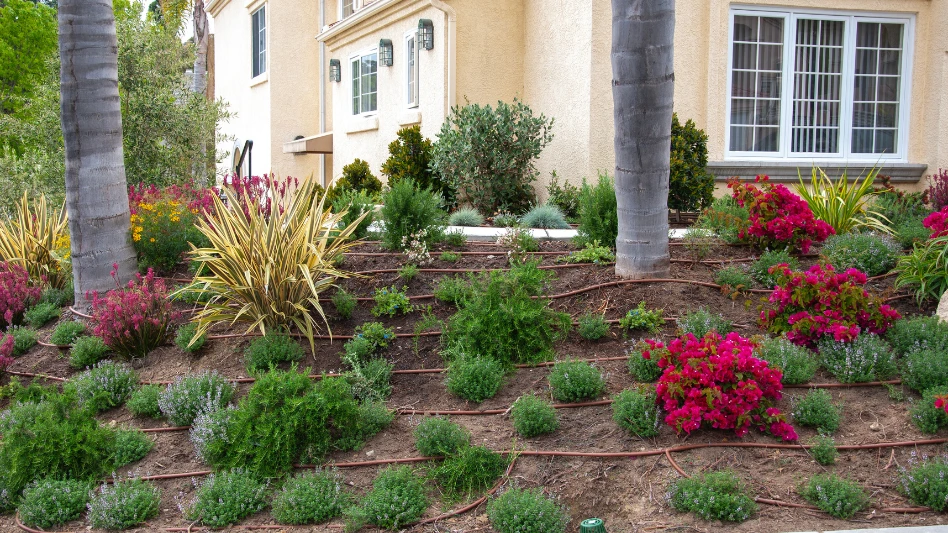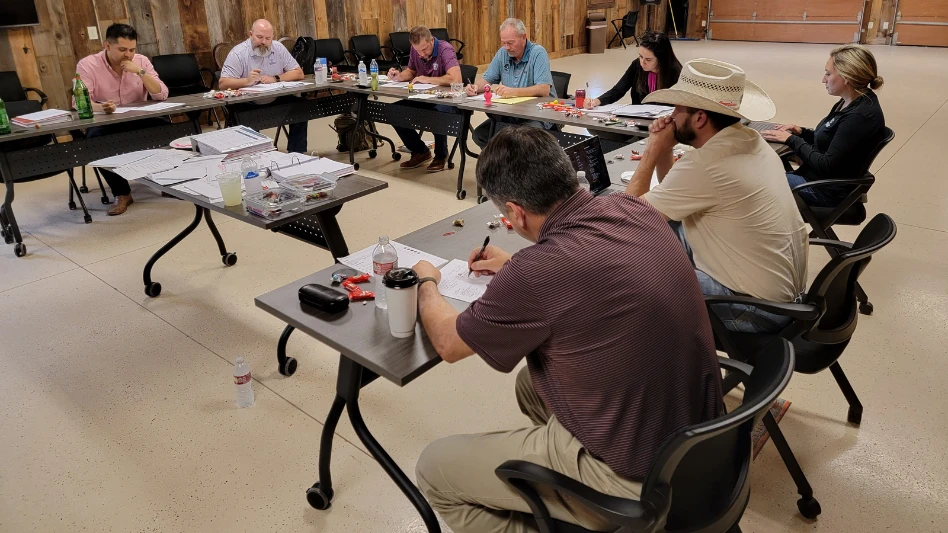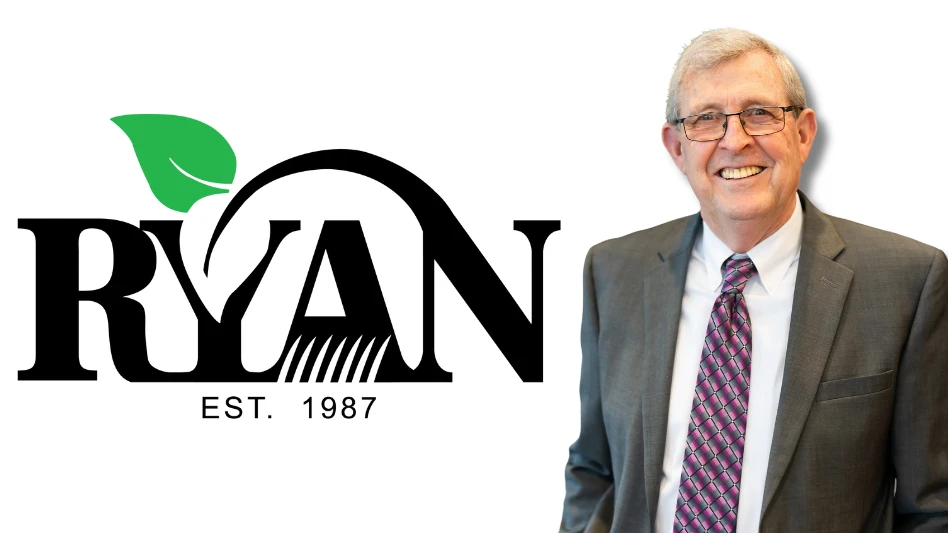 uying renovation equipment is no different than most other actions you take in your business – think about your customers needs’ before doing anything. That‘s why James Ridgeway, manager at Unique Lawn Care in Louisville, Ky., opts to rent the larger renovation equipment (like aerators) for the first few years after he starts new branches of the company.
uying renovation equipment is no different than most other actions you take in your business – think about your customers needs’ before doing anything. That‘s why James Ridgeway, manager at Unique Lawn Care in Louisville, Ky., opts to rent the larger renovation equipment (like aerators) for the first few years after he starts new branches of the company.
This allows the company time to gauge the needs of their customers while ensuring that the company is purchasing the right equipment for that location.
However, Ridgeway, whose service mix is 85 percent lawn care, believes in only renting for a short period (one to two seasons).
“The one aerator that we had did fine in Indianapolis with the land being so flat, but not well in Louisville with all the hills,” Ridgeway says. Renting the equipment in Louisville first ended up saving Ridgeway money and ensured that he purchased the right equipment for the area.
Instead of renting, Jake Silvis, president, Silvis Group in Mt. Pleasant, Pa., prefers to demo new units. These trial runs will help Silvis, whose service mix is more than 30 percent lawn care, to evaluate whether the equipment does what the manufacturer states and fits the needs of their company.
Scott Shubert, owner of Scott and Sons, Delmar, Del., also prefers to buy his equipment outright, something he is able to comfortably do as he usually replaces the older worn out models with newer versions.
Having a reliable sales representative, Shubert says, is an essential resource. “Find a good reputable representative and deal with him, don’t always shop for prices,” says Shubert, whose company’s service-mix includes 40 percent lawn care. “Look for the loyalty that they have with you, responding as fast as they can and being there when you need them.”
Flexibility.
Employee fatigue is an important factor to consider when determining the type of equipment to purchase. Ride-on equipment puts the least amount of physical strain on employees, however these larger machines have limited application.
Walk-behind aerators seem to be the main aerator of choice as they can fit into the majority of areas for all three contractors. Plug-pulling aerators, Silvis says, work better in heavier soils than the spike versions.
Equipped with hollow tines, these aerators pick up soil plugs as they move along the lawn, ensuring that the water is able to deeply penetrate the soil and roots.
Ridgeway looks for machines that are lighter and easily maneuverable, decreasing the amount of physical strain on employees. Size is also a factor Shubert considers, preferring to have two options of aerators for his team – one that can fit through garden gates and a bigger one to get the job done faster.
 For bigger properties, Ridgeway uses ride-on aerators. “One of the challenges with the (ride-ons) is that they don’t fit into all of the gates,” Ridgeway says. “To mitigate this potential problem, the trucks always go out with a push aerator as well as the (ride-on.)”
For bigger properties, Ridgeway uses ride-on aerators. “One of the challenges with the (ride-ons) is that they don’t fit into all of the gates,” Ridgeway says. “To mitigate this potential problem, the trucks always go out with a push aerator as well as the (ride-on.)”
When it comes to dethatchers, Shubert and Ridgeway didn't see the need to invest in one. Shubert found the limited requests for dethatching did not warrant purchasing one. Ridgeway opted to not purchase one, recommending both fall aeration and lime application as a preventative strategy for thatch.
For overseeding, slit seeders are the choice for Ridgeway and Silvis ensuring that seeds are planted deeper in the soil and evenly distributed. If renting slit seeders, Silvis cautions it is extremely important that they are regularly maintained, which includes changing the blades every two weeks. “A worn out slit seeder will cost you down time or not perform well if the knives are worn out,” Silvis says.
Maintaining equipment.
Before purchasing equipment, Ridgeway looks at how accessible the parts are, mainly the chains and belt, for maintenance. Most of the maintenance is done in-house, therefore accessibility and familiarity with the engines is important. Ridgeway and Shubert perform maintenance every two weeks with regular nightly surveys.
“The crew running the machines will write up an unload sheet and our pit crew will do general maintenance in the evening before it is put away,” Silvis says. “If the repair is greater than their ability, our fleet and facility department will send for those repairs so it is ready for use.” Ridgeway recommends adhering to the normal maintenance schedule as closely as possible, adjusting according to the use of the equipment.
Due to their performance and reliability, Shubert prefers to choose motorized equipment with Honda engines. Being able to both service the equipment, if needed, and quickly order parts are two other factors that Shubert considers when choosing his equipment.
Connecting with employees.
Ridgeway finds out what his employees like from the ground level, spending the time in the field working with them. Creating a positive working relationship is extremely critical, and Ridgeway is happy to share that his employees are vocal enough to let him know what works and what doesn’t.
If his employees ask to try out a new model, Ridgeway will often rent the equipment, let them sample it and listen for their feedback. Silvis also follows a hands-on approach with his employees, requesting feedback on equipment and making frequent site visits.
Silvis makes regular on site visits comparing the job results to his employee’s feedback about the new equipment. This helps Silvis gauge whether his employees are using the right equipment for the job.
“Our team will tell us if the machine is working for their needs or not,” he says. “The proof is in the end results of the job and how the lawn is growing after a few weeks.”
The author is a freelance writer in Ontario, Canada.

Explore the August 2014 Issue
Check out more from this issue and find your next story to read.
Latest from Lawn & Landscape
- LMN partners with Attentive.ai
- Get to know the generations working for you
- Addressing addiction in landscaping
- Fairway expands national footprint with 6 acquisitions
- Graze Robotics opens new headquarters in Plano, Texas
- Addiction in the green industry
- Kress earns Sourcewell approval
- The best laid plans





